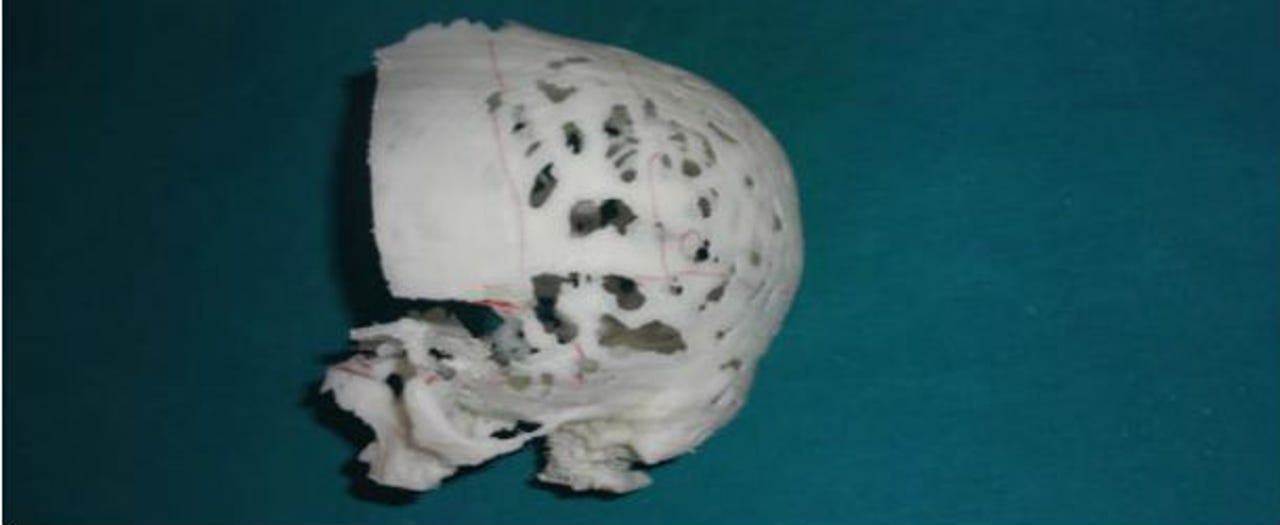Indian surgeons tackle rare disease with 3D-printed skull

Mint newspaper recently reported on an important achievement made by the medical community in India that is a big step towards showing how emerging technologies can positively impact surgical procedures.

A team of plastic surgeons from the Jawaharlal Institute of Postgraduate Medical Education and Research (JIPMER) in Pondicherry in the South of India proceeded to repair the deformed skull of a girl using 3D-printing technology. The patient, a three-year-old girl, suffers from a condition called craniosynostosis — a premature ossification of the bone in an infant skull, where the joints between the bones apparently fuse together in an abnormal way. This obviously can be calamitous on brain growth, vision, sleep, smell, and other critical functions, and can also significantly impact mental development.
I should probably make it very clear that this wasn't a Blade Runner-esque exercise, where the brain was artfully inserted into a new 3D-printed skull and then hooked up to the rest of the body — that's still within the realm of a Hollywood Philip K Dick story brought into cinematic life, although we're probably not too far away from the day when this will happen. (And God help us if we can do the just-mentioned exercise using a 3D-printed brain.) Instead, these surgeons devised an exact replica of the child's skull to practice on — which is key, considering that in the past, they would have to rely on 2D visualizations that they would have to internalize and convert into 3D in their own mind's eye prior to the operation.
Now, however, they are practising on as close to the real deal as possible before even stepping into the operation theatre. In order to make a replica of their patient's skull, they had to first conduct a CT scan and then convert it into a 3D file, which was then sent to 3D printer maker Divide by Zero Technologies in Mumbai. Using the additive process of a 3D printer (in this case, Accucraft i250+, which melts countless thin layers of metal powder, one upon another, using a laser) the company shaped a replica of the girl's brain. It took them nine hours to do so.
"We would have completed the operation by now, but the girl has contracted a respiratory infection, because of which we cannot give her anaesthesia," the leader of the surgical team, Dinesh Kumar, told Mint newspaper.
Of course, the medical field is already well into experimenting and developing with all kinds of ground-breaking 3D technologies. For instance, a team from eastern China has successfully printed a series of living kidneys from a mixture of cultured cells and a nutrient-rich hydrogel (although medical experts say that to successfully do so in a human body will take another 15 years or so, as the kidney, with 35 different cell types and innumerable small tubes, is probably the most complex organ you could hope to successfully print). Sometime this year, San Diego-based bio-printing company Organovo said that it will introduce to the world the first-ever, fully functioning 3D-printed human liver.
So, compared to these kinds of complex undertakings in the world of medical 3D printing, using a 3D skull to practice on may not seem to be such a big deal. But considering the lack of resources in India and the number of people whose lives can be transformed through the simplest of technologies or innovations, the 3D skull will prove to be a pioneering achievement in the country.